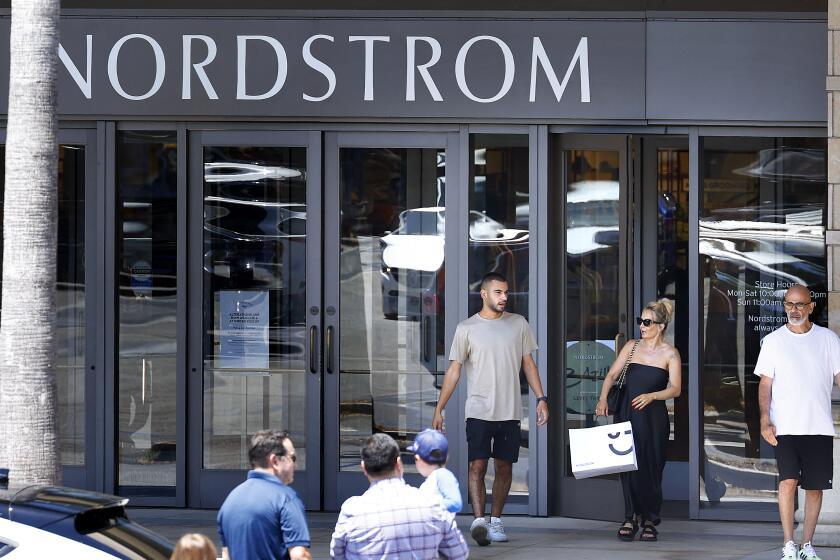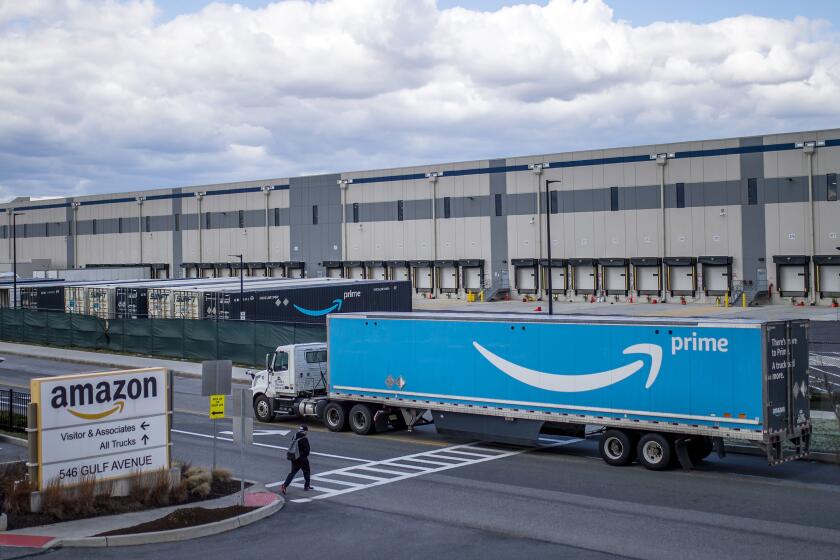There’s No One Right Way to Think About Asia
- Share via
The prevailing sentiment on Wall Street last week was that financially crippled East Asia is a bigger mess than most people had figured, and that the ultimate effect on the U.S. economy will be much more negative than was first thought.
Hence, the Dow Jones industrial average fell 3.8% for the week, closing Friday at 7,838.30.
This is the same Dow index that had risen 4.2% the previous week, at least in part on optimism that Asia wasn’t such a big deal after all.
The market doesn’t just seem confused--it is confused. Economists, with their “macro” forecasts for the economy as a whole, almost universally believe that U.S. growth will slow moderately next year because of weaker demand for American goods and services in Asia.
But the macro is made up of a lot of “micros,” meaning the specific impact on individual businesses. And that’s where Wall Street, which craves simple answers to big questions, finds itself increasingly agitated: While Asia’s economic crunch has woeful implications for some U.S. companies, others are looking at a potential windfall.
For example, Gary Schoenfeld, chief executive of Vans Inc., the Santa Fe Springs-based maker of casual shoes for the young and hip, can scarcely believe his good fortune. While many other U.S. shoe companies moved production out of South Korea in recent years, 80% of the shoes Vans sells are still produced in that nation.
With the South Korean currency’s plunge this year versus the dollar, the same Korean product that cost the equivalent of $1 four months ago would now cost about 50 cents, all other things being equal.
“Right now, I sure like sourcing our shoes from Korea,” says Schoenfeld, in a bit of an understatement. With the cost savings Vans will realize in purchasing shoes from South Korea, it can either reduce its retail prices, raise its profit margins or both.
But currency devaluations are, of course, no fun for the natives, whose purchasing power suddenly dwindles. That will certainly make it tougher for East Asians to afford American goods, let alone travel to, say, California in 1998.
*
Yet in the near term, the Japanese may be making up for part of any East Asian tourist shortfall: JTB International, a tour-booking firm in Los Angeles, says the number of Japanese expected to vacation here between Christmas and New Year’s is up 13% over last year, despite Japan’s economic troubles.
Japanese still seem quite interested in coming here, even as their interest in vacationing in Hong Kong, Australia and the rest of Asia has diminished dramatically this year, says Shiro Monden, JTB executive vice president for marketing.
But will the Japanese buy as many--or more--fruits and vegetables from California growers next year as they did this year? That is of more than passing interest to the state’s Central Valley, because 25% of California’s agricultural exports go to Japan, according to Louie Brown, associate director of national affairs for the California Farm Bureau Federation.
And Asia overall takes fully 60% of California’s ag exports--the cost of which now has climbed sharply for any country whose currency buys fewer U.S. dollars.
“They still have to feed their people,” Brown says of East Asian governments. True, but will they be able to afford California produce prices? Or will U.S. consumers enjoy lower prices in 1998 because of a crop glut should Asian demand fall off?
For the California economy overall, there is clearly more risk stemming from Asia’s turmoil, because California has long mined so much opportunity in Asia.
Howard Roth, senior economist at Bank of America in Los Angeles, says U.S. merchandise exports to Asia account for 2.6% of the nation’s gross domestic product, or total output. But California’s merchandise exports to Asia account for about 5.6% of the state’s economic product, Roth estimates.
Add in services--including film production, computer software and tourism--and the Asia-dependent component of the California economy increases perhaps a couple of percentage points more.
Few of the state’s economic sectors are as dependent on Asia as Silicon Valley. Roth estimates that nearly 40% of the San Jose area’s economic output is exported, with about half that going to Asia.
Why, then, was Wall Street blindsided last week when software firm Oracle Corp., semiconductor-manufacturing equipment maker Kulicke & Soffa and other high-tech companies warned of weaker-than-expected earnings in the near term, at least partly because of a decline in demand from Asian customers?
Oracle’s shares plummeted 29% on Tuesday in record trading on Nasdaq, triggering a deep sell-off in the tech sector that lasted for the rest of the week.
The short answer to the why-didn’t-they-see-it-coming question is that until last week, the companies themselves didn’t indicate to Wall Street that Asia was a problem, despite Silicon Valley’s significant export dependence.
The relationship between brokerage analysts and the companies they follow often amounts to “If you don’t tell, we won’t ask.” In other words, many analysts will assume a business is OK unless the company hints otherwise.
In addition, investors may have been focusing too much on the positive implications of Asia’s troubles on the tech business--namely, that many computer components now manufactured in East Asia for U.S. companies should become cheaper because of the region’s currency devaluations.
*
Kevin Landis, co-manager of the $210-million Technology Value stock mutual fund in Milpitas, believes that the sudden Wall Street obsession with Asia’s potential depressant effect on the tech sector provides a good opportunity to profit from others’ misdirected fears.
With the stocks marked down substantially, Landis says, “what we’re looking to do is understand where these companies will be in a year. . . . This is your chance to buy strong companies” at much cheaper prices than even a few weeks ago, he says.
He cites, for example, specialty semiconductor maker Altera, which has fallen to $30.56 on Nasdaq, down 53% from its 1997 high; Vitesse Semiconductor, now at $35.19 on Nasdaq, down 38% from its high; and semiconductor-manufacturing equipment company Applied Materials, now at $26.13 on Nasdaq, down 52% from its high.
Whatever happens in Asia in the near term, Landis points out, it isn’t going to stop the long-term march of technology into every aspect of our lives. As for the companies themselves, Landis says, trouble in Asia is hardly the worst nightmare the tech sector has ever faced.
“I think high tech is less fazed by this than a lot of other industries,” Landis says. Tech companies, after all, “are used to markets exploding or suddenly disappearing on them.”
Tom Petruno can be reached at tom.petruno@latimes.com
More to Read
Inside the business of entertainment
The Wide Shot brings you news, analysis and insights on everything from streaming wars to production — and what it all means for the future.
You may occasionally receive promotional content from the Los Angeles Times.










